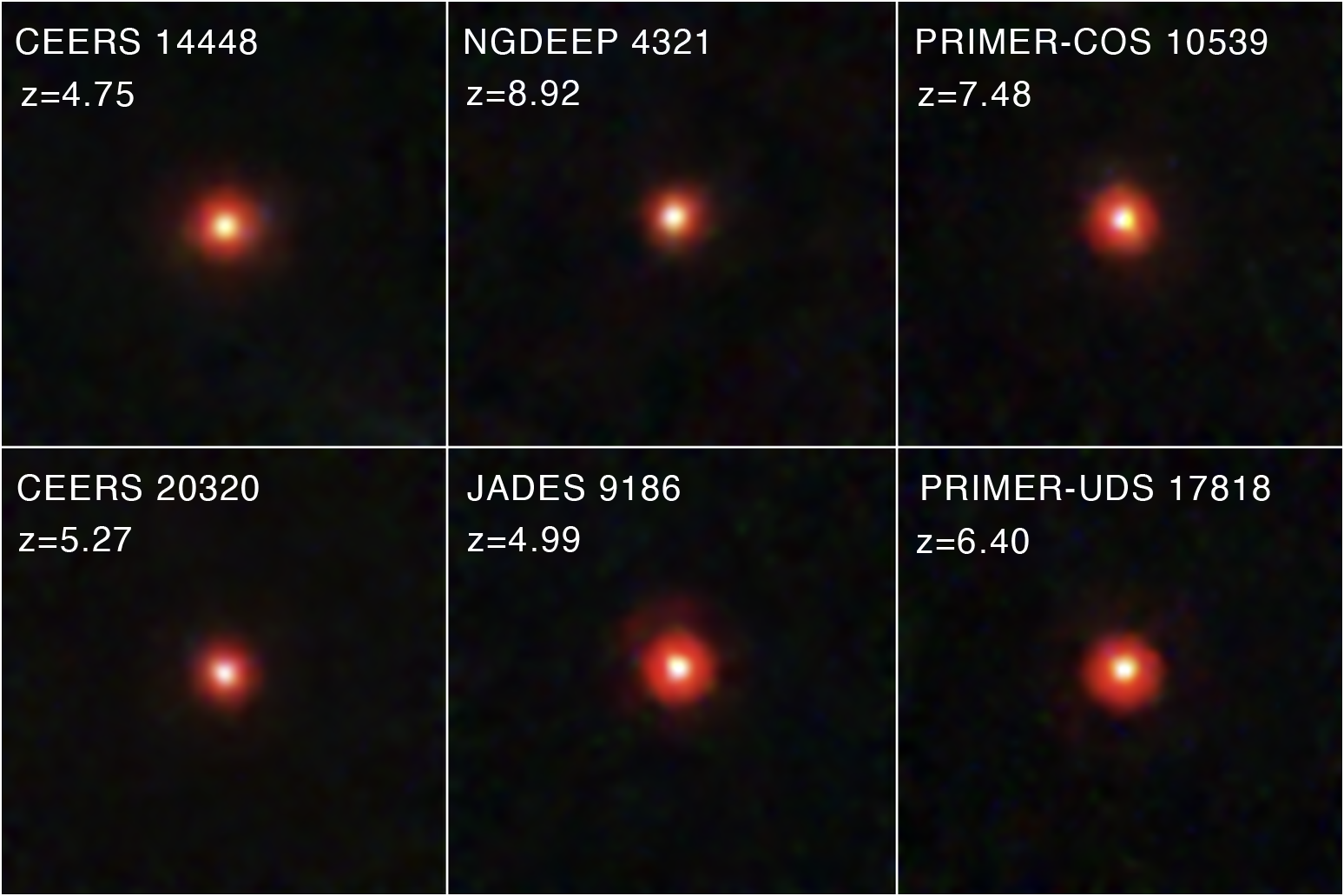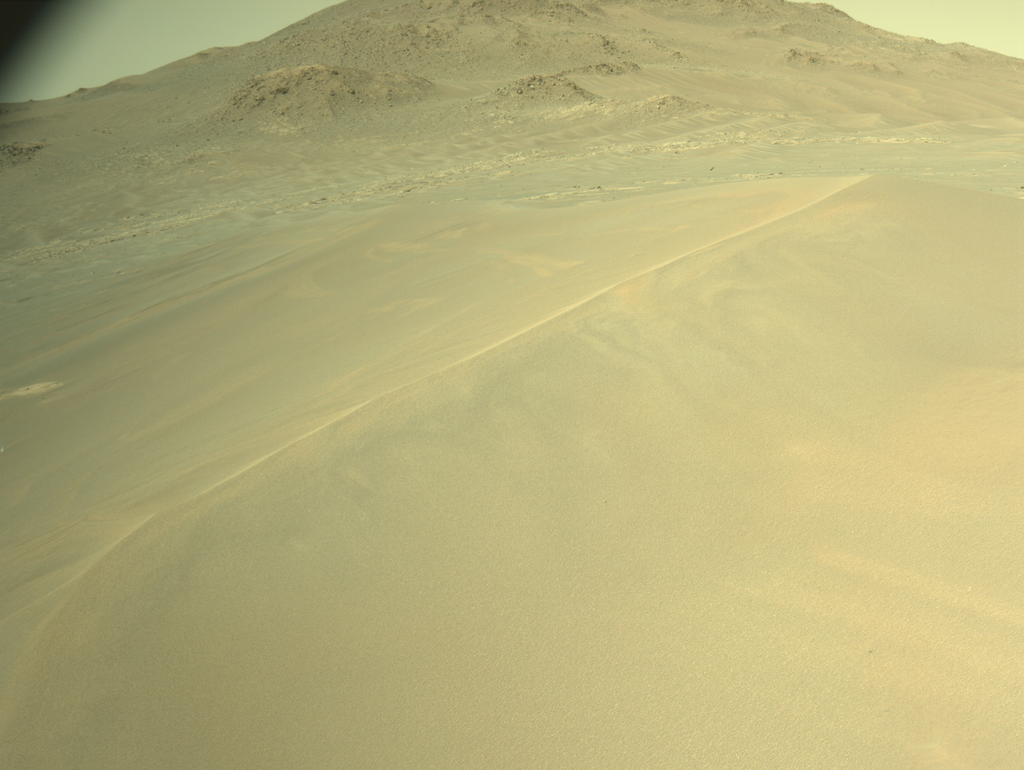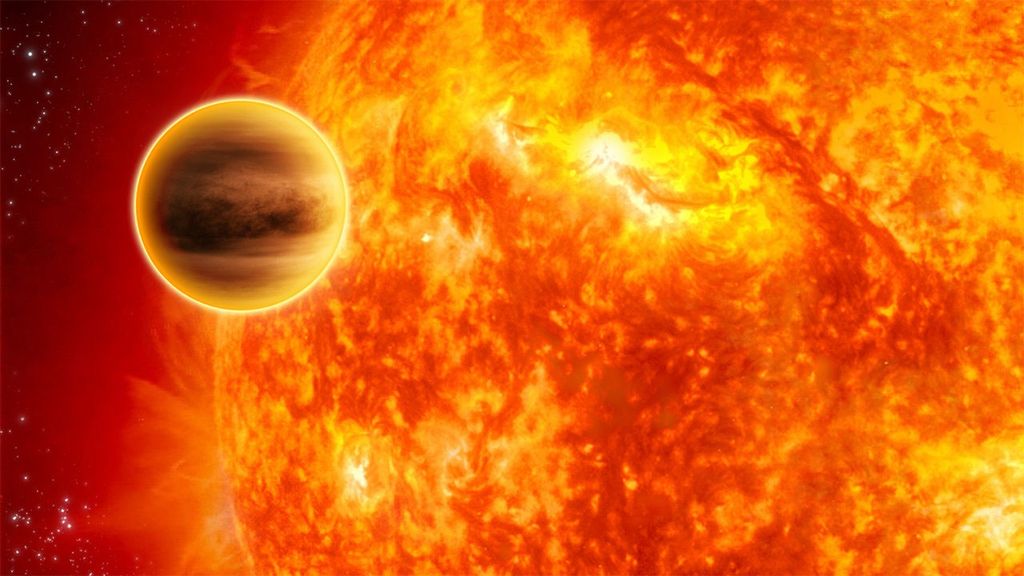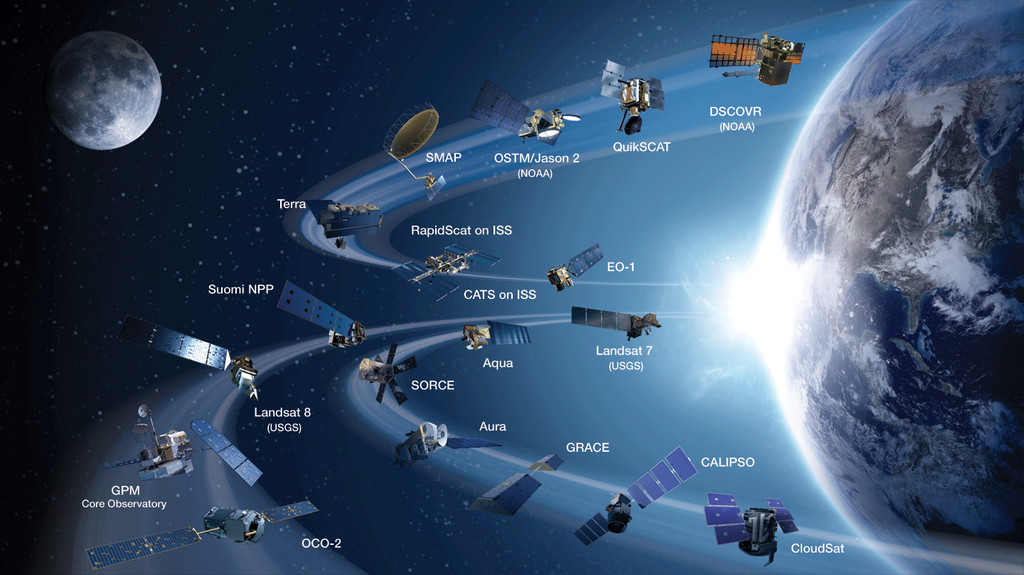1 min read
Little Red Dots (NIRCam Image)

A team of astronomers sifted through James Webb Space Telescope data from multiple surveys to compile one of the largest samples of “little red dots” (LRDs) to date. The team started with the Cosmic Evolution Early Release Science (CEERS) survey before widening their scope to other extragalactic legacy fields, including the JWST Advanced Deep Extragalactic Survey (JADES) and the Next Generation Deep Extragalactic Exploratory Public (NGDEEP) survey.
From their sample, they found that these mysterious red objects that appear small on the sky emerge in large numbers around 600 million years after the big bang and undergo a rapid decline in quantity around 1.5 billion years after the big bang. Spectroscopic data of some of the LRDs in their sample, provided by the Red Unknowns: Bright Infrared Extragalactic Survey (RUBIES), suggests that many are accreting black holes. However, further study of these intriguing objects is required.
About the Object
- DimensionsDimensionsThe physical size of the object or the apparent angle it subtends on the sky.Each square is 1.5 arcseconds across
About the Data
- InstrumentInstrumentThe science instrument used to produce the data.NIRCam
- FiltersFiltersThe camera filters that were used in the science observations.F115W, F200W, F444W
- Object DescriptionObject DescriptionThe type of astronomical object.Little red objects from JADES, CEERS, PRIMER, UNCOVER and NGDEEP Surveys
- Release DateJanuary 14, 2025
- Science ReleaseNewfound Galaxy Class May Indicate Early Black Hole Growth, Webb Finds
- CreditImage: NASA, ESA, CSA, STScI, Dale Kocevski (Colby College)

These images are a composite of separate exposures acquired by the James Webb Space Telescope using the NIRCam instrument. Several filters were used to sample wide infraraed wavelength ranges. The color results from assigning different hues (colors) to each monochromatic (grayscale) image associated with an individual filter. In this case, the assigned colors are: Red: F444W, Green: F200W, Blue: F115W
Share
Details
Laura Betz
NASA’s Goddard Space Flight Center
Greenbelt, Maryland
laura.e.betz@nasa.gov
NASA, ESA, CSA, STScI, Dale Kocevski (Colby College)






























